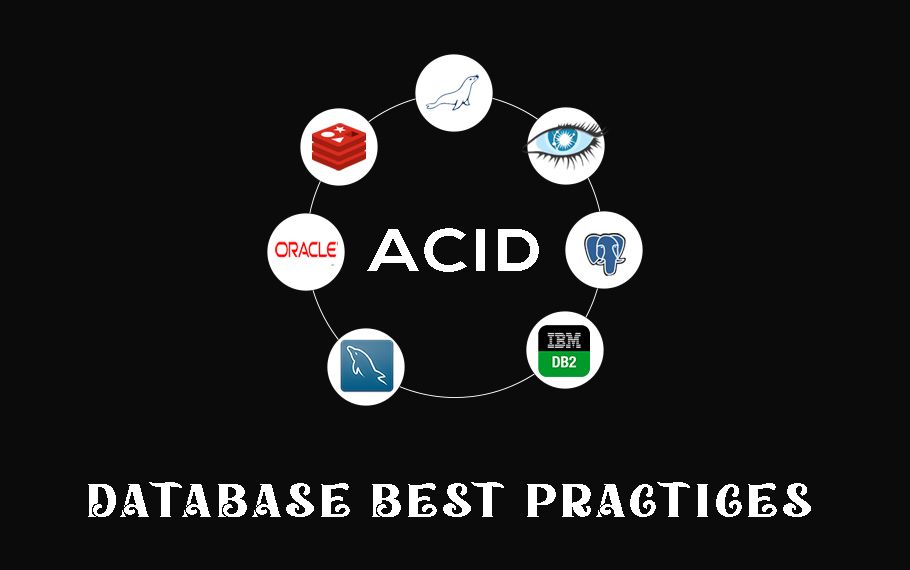Databases are an integral component of building applications, whether web, desktop or mobile. They symbolically serve as the mitochondria of the application, as their primary function is to manage data.
Database management is a critical skill a developer must possess in building scalable applications that have a high level of efficiency. If not handled properly, it can result in data loss and mismanagement on the part of the database developer.
Hence, databases must be structured and built with the users in mind and built utilizing the best practices available.
This article aims to highlight general principles of database best practices and also explain each peculiarity. But before we discuss that in detail, let’s review what database transactions are all about.
What are Database Transactions?
Database transactions are simply groups of operations which can be termed as a unit of a work process performed on a database within a database management system.
It encompasses basic operations such as CRUD operations to more advanced operations such as database indexing, caching, and normalization.
With so many users performing many transactions at the same time, it’s important to ensure that the database is concurrency-enabled to prevent data interference between two or more users accessing the same resource.
Hence, there is the need for the ACID principle. What then does ACID represent?
- Atomicity
- Consistency
- Isolation
- Durability
Subsequently, we will be discussing each point in detail. First on our list is atomicity.
What is the Database Atomicity Principle?
What does database atomicity entail? The atomicity of a database simply means that a database operation can’t be broken down further as a unit. This means that the database operation or transactions gets executed completely, and in case any error comes up during the execution process, the entire operation gets completely cancelled, preventing room for partial operation execution.
If the database isn’t atomic, this can result in the provision of misleading incomplete data and ultimately result in entire system chaos. How does the database ensure atomicity? It does this by creating a copy of the existing database before the operation gets executed and then initiates a crash recovery and backup restoration operation in the event of an operation failure.
It is also important to note that other database principles such as consistency and durability rely on the need for the database to be atomic to be truly fulfilled.
Having discussed this, let’s move on to the database consistency principle.
What is the Database Consistency Principle?
This principle entails that the database has certain constraints, cascades, triggers and other requirements in place, which needs to be fulfilled while making changes to an established database. Failure to fulfill this requirement will lead to consistency errors, returning the database to its previous stable state.
Also, consistency as a principle ensures that the data updated by a user is made available as the latest version of the data in the database to all users who desire to read the database. Having this in place eliminates the occurrence of inconsistencies and aids faster information retrieval.
Understanding what it means for a database to be consistent involves ensuring the operation performed on the database passes the integrity check before being successfully executed. Having exhausted this in detail, let's discuss the database isolation principle.
What is the Database Isolation Principle?
Why should we isolate a database and how does one make a database operation independent from other database operations?
Isolation is necessary in a database management system to ensure that the user's access to information on the database is not interfered with by other concurrent transactions undertaken by other users on the database. To enforce this, the use of isolation levels in each database operation helps to preserve information integrity.
To effectively guarantee the database integrity, specific database isolation levels must be used. Here are some of the isolation levels ranked in order of hierarchy:
- Read uncommitted
- Read committed
- Repeatable read
- Serializability
Read Uncommitted Isolation Level
The read uncommitted database isolation level allows other users to have access to read current database transactions which has not yet been completely or successfully executed. It allows access to read what is being referred to as dirty read, which is one of the data inconsistencies that can be seen. This level of data isolation isn’t advised.
Read Committed Isolation Level
This database isolation level disallows other users to read or have access to a database transaction that has not yet been committed. Hence it prevents other users from seeing, updating or overwriting it until it has been completely executed.
Repeatable Read Isolation Level
This isolation level exclusively isolates a transaction from other transactions occurring concurrently, preventing other users access to read and update the transactions.
Serializability Isolation Level
This is the highest level of data isolation and is referred to as the strictest level. It isolates the multiple transactions performed concurrently and executes them efficiently as they are executed serially. It also prevents database inconsistencies.
Without these levels in place, inconsistent database mishaps such as dirty reads, non-repeatable reads, phantom reads and many others may be experienced. With this, let's move on to the last point about database durability and discuss it in detail.
What is the Database Durability Principle?
What does it imply when we describe a database as durable and how do we ensure the durability of a database? Durability as it sounds is a principle which ensures that databases have a high level of immortality.
Irrespective of any adverse outcomes that the database management system might face such as outages and crashes, there shouldn't be any loss of database information.
How do databases try to achieve this? The database creates a transactional log that contains the recorded data before any new operation gets executed. In the event of any of these adverse events, the transaction log serves as the backup store, ensuring that the database info is well preserved up to the point before the operation occurred, thereby mitigating against data breaches and loss.
We'll also highlight other helpful database operations best practices that can also be implemented.
Other Database Operations Best Practices
The BASE principle, which is more suited for NoSQL databases such as MongoDB, Redis, and Cassandra, and so on. It entails a database to be:
- Basically available
- Existing in a soft state
- And be eventually consistent.
Basically Available
This entails that the database prioritizes the availability of the database operations over consistency and concurrency. This is quite applicable to distributed systems which rely on a high level of efficiency to function effectively.
Soft State
This ensures easy flexibility of the database, allowing for size scaling, operations and increased concurrency for optimal database performance at all times. This allows the data to maintain resiliency.
Eventually Consistent
This entails that, irrespective of how the transactions get executed in the sequences, it eventually achieves efficient consistency. This is achieved by conflict resolution and reconciliation. This eventually contributes to the building of a resilient data system.
Conclusion
With this, we have come to the end of the tutorial. We hope you’ve learned essentially about optimizing database operations and their efficiency using the ACID principle and other best practices available.
Feel free to drop comments and questions in the box below, and also check out my other articles here. Till next time, keep on coding!

